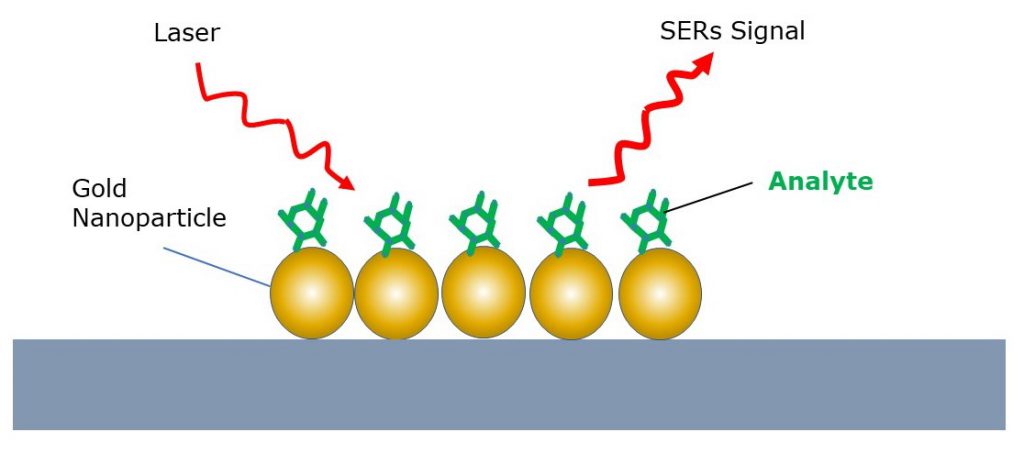Surface-enhanced Raman spectroscopy (SERS) is used to detect and characterise samples. Although it was first discovered in the late 1970s for laboratory use, it has been utilised outside of labs since the advent of nanostructured substrates in the 1990s In this blog post, we will explain what SERS technology is used for alongside its benefits.
What Is SERS Technology?
SERS is an extremely sensitive method in which a large variety of chemical and biological molecules in a low concentration can be detected. The technique can also provide important structural information about the molecules being tested.
SERS is also known as Surface-enhanced Raman scattering (SERS) because it helps enhance the results of the Raman scattering process, which is very weak, typically 1 in 1 million scattering rate. The process involves the inelastic scattering of photons with a different frequency than the source that caused the process.
Raman signals can be enhanced by gold and silver nanoparticles which heighten the sensitivity of the Raman spectroscopy and, as a result, help to detect ppm and ppb levels.
In What Applications Is SERS Technology Used?
In recent years, SERS technology has been used in a wide range of applications both in and outside of laboratories. Currently, it is used in the pharmaceutical, narcotics, food, environmental and biological industries and below, we will outline the specific uses.
Pharmaceutical: There are numerous essential applications of SERS with pharmaceuticals, including being used in developing new medicines and for testing toxicity. SERS can be used to test contamination in a product, which, if sold, could have a detrimental impact on both the patient and the company.
Narcotics: SERS is frequently used in detecting illegal drugs such as fentanyl, heroin, cocaine, methamphetamine and THC, both in the laboratory and in the field by law enforcement and border control agencies. It can also be used to determine traces of the drugs mentioned above in saliva and urine samples.
Food: In the food industry, SERS can detect even the slightest trace of pesticides and contaminants in foods, such as Melamine which was discovered in infant formula This testing is vital for maintaining high-quality products which are safe for consumption.
Environmental: When analysing environmental samples, SERS can identify and quantify organic and inorganic pathogens, nanomaterials and contaminants. It can be used on both airborne and aqueous contaminants to test air pollution, gas levels and the quality of drinking water. All of which are crucial for keeping people safe.
Biological: SERS is used in biological and biomedical applications such as cancer detection and development monitoring, detection of metabolites and pathogens, and the characterization of microorganisms.
What SERS Products Are Available At Nikalyte?
At Nikalyte, we produce SERS substrates for Raman spectroscopy for either field or lab use in narcotics, life sciences and forensics. These SERS active substrates can magnify Raman signals up to 1000 times.
Additionally, our NL50 is our direct nanoparticle deposition system, a must-have tool for SERS research. The NL50 is a benchtop instrument designed to support the preparation of materials such as gold and silver.
Some of the benefits of our NL50 include:
- Compact in size
- Easy to use
- Perfectly suited to plasmonic materials
- Flexibility of substrate as you can deposit on paper, plastic or glass
If you are ready to purchase Nikalyte’s SERS substrates or our NL50, or if you would like more information on SERS technology, please don’t hesitate to contact us today.

